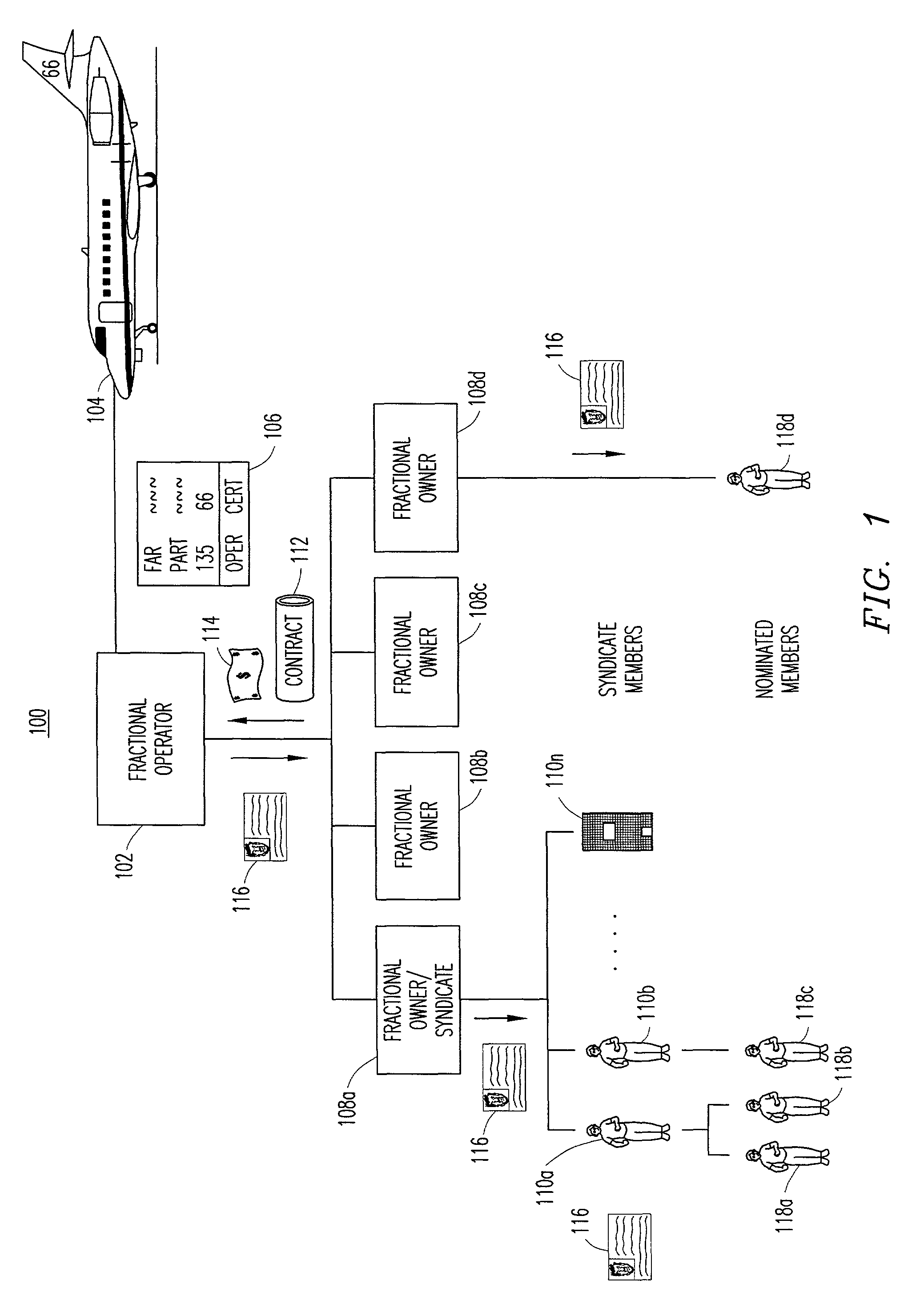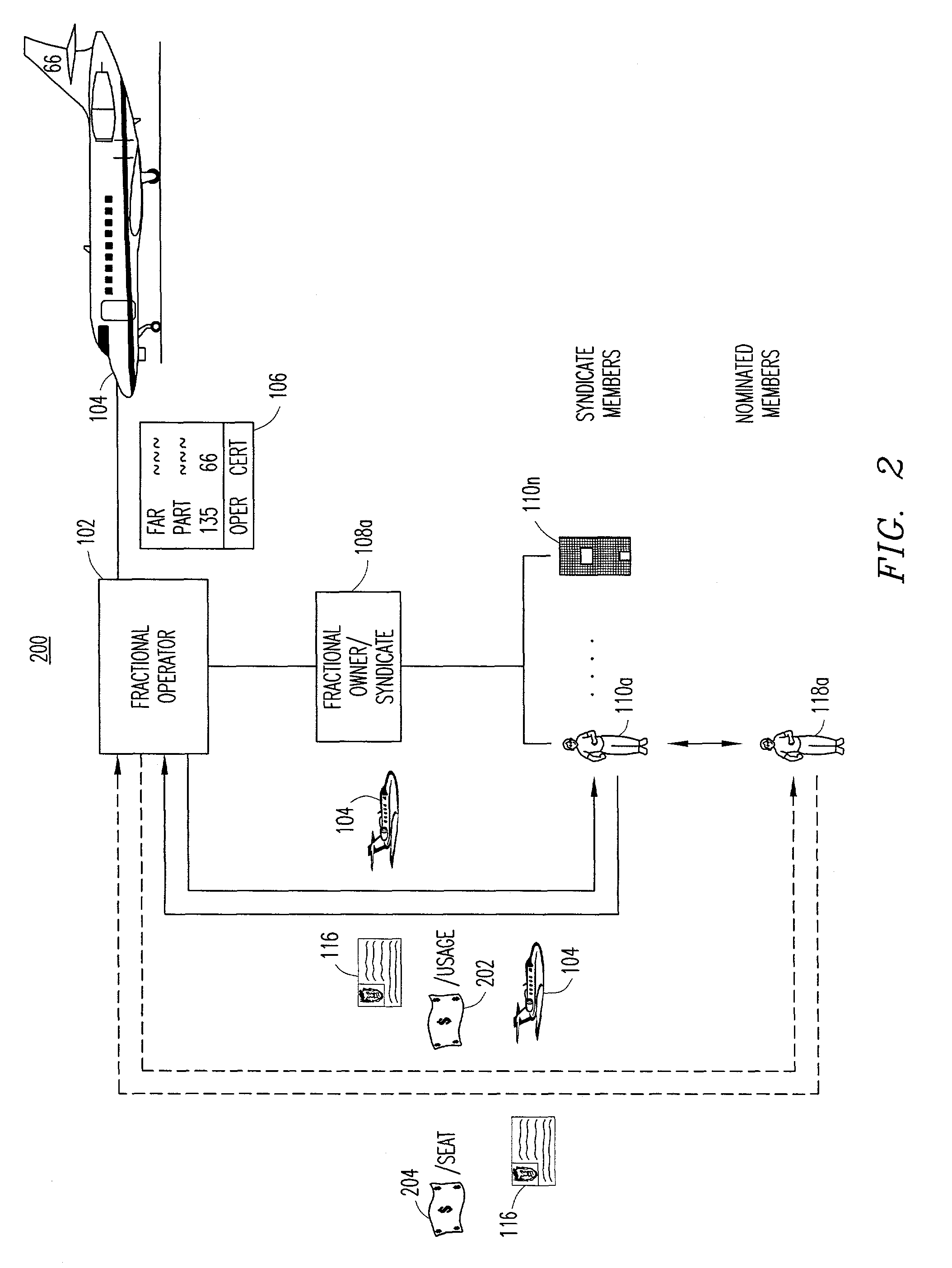Method and system for providing and managing a fractional aircraft ownership program
a fractional aircraft and ownership technology, applied in the field of aircraft ownership and services, can solve the problems of increasing difficulty and difficulty of commercial airline travel, inconvenient and costly, and affecting business travel, and achieving the effects of reducing and increasing the difficulty of business travel
- Summary
- Abstract
- Description
- Claims
- Application Information
AI Technical Summary
Benefits of technology
Problems solved by technology
Method used
Image
Examples
Embodiment Construction
[0036]Fractional ownership of an aircraft has become a growing industry in response to increased influence lowering costs, increased affluence, airport congestion, and reduction of commercial airline services. Fractional aircraft ownership as understood in the art is defined as partial (direct) ownership of an aircraft by multiple entities. A fractionally owned aircraft is one that is owned by individuals or business entities having a share of ownership of the aircraft. Such an ownership criteria may change according to federal regulations. It is understood in the art that an aircraft owned by a fractional owner is typically placed into a pool of aircraft managed by a fractional operator. And, that while a fractional owner may own a percentage of an aircraft, that usage of an aircraft by the fractional owner from the pool of aircraft is deemed to be usage of the aircraft owned by the fractional owner.
[0037]While fractional ownership has been growing, fractional operators seek to fur...
PUM
 Login to View More
Login to View More Abstract
Description
Claims
Application Information
 Login to View More
Login to View More - R&D
- Intellectual Property
- Life Sciences
- Materials
- Tech Scout
- Unparalleled Data Quality
- Higher Quality Content
- 60% Fewer Hallucinations
Browse by: Latest US Patents, China's latest patents, Technical Efficacy Thesaurus, Application Domain, Technology Topic, Popular Technical Reports.
© 2025 PatSnap. All rights reserved.Legal|Privacy policy|Modern Slavery Act Transparency Statement|Sitemap|About US| Contact US: help@patsnap.com



